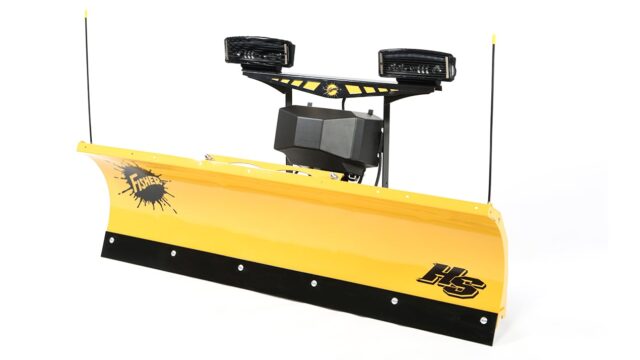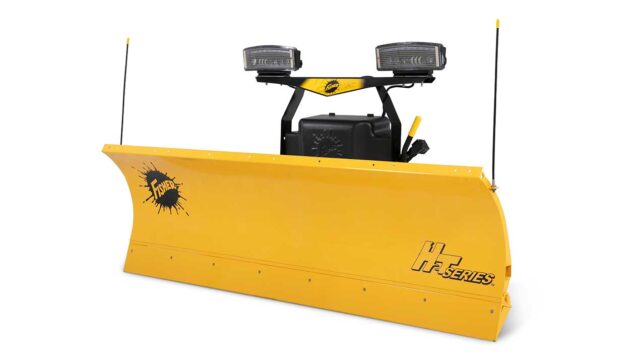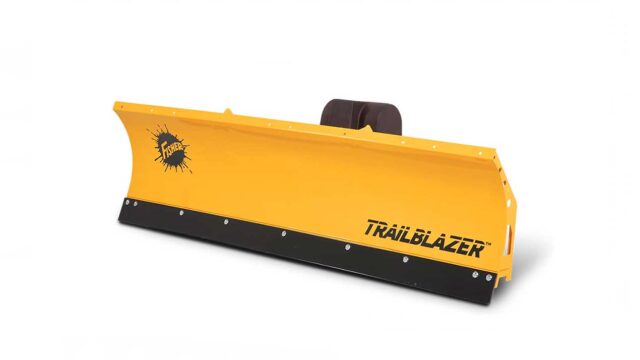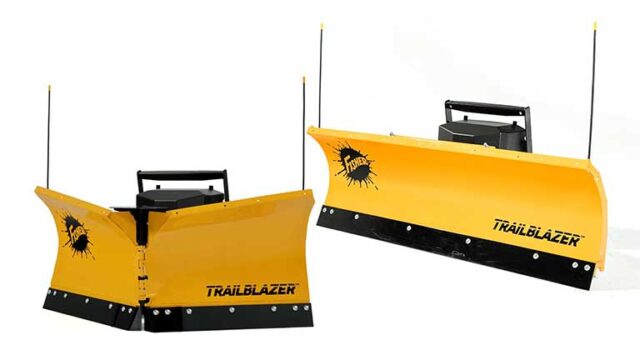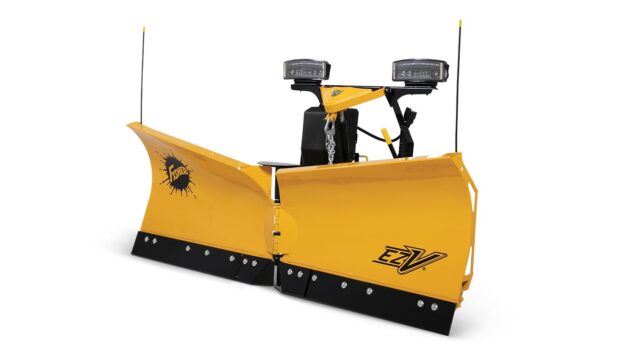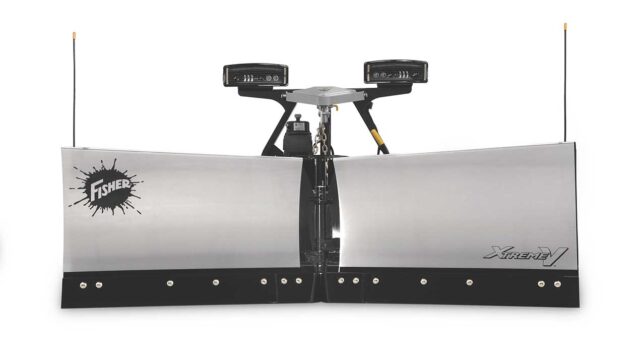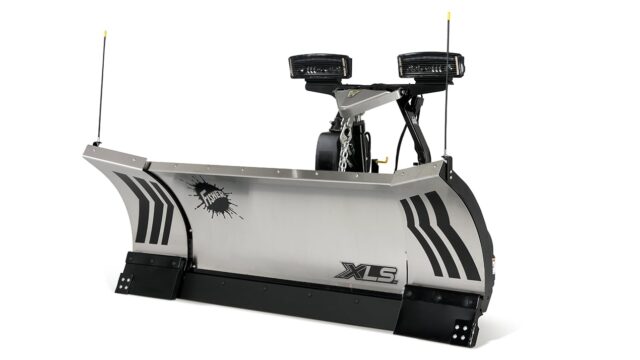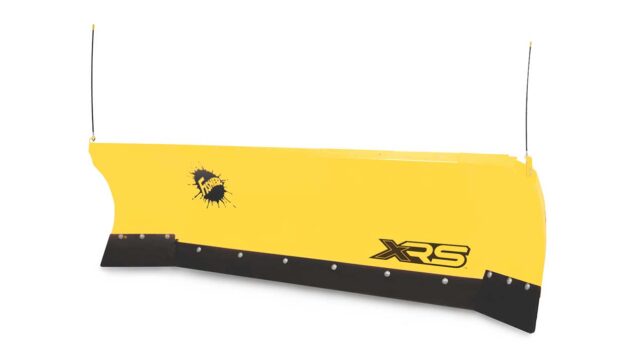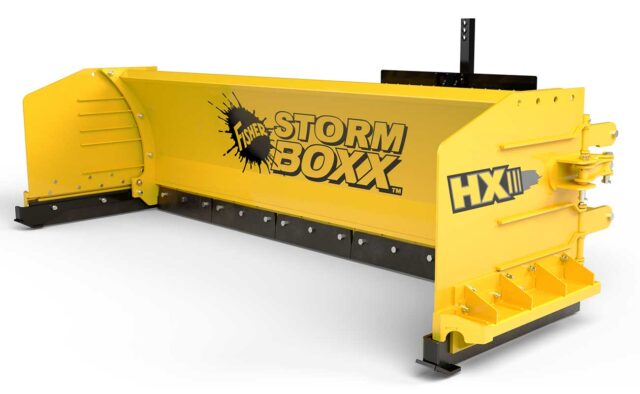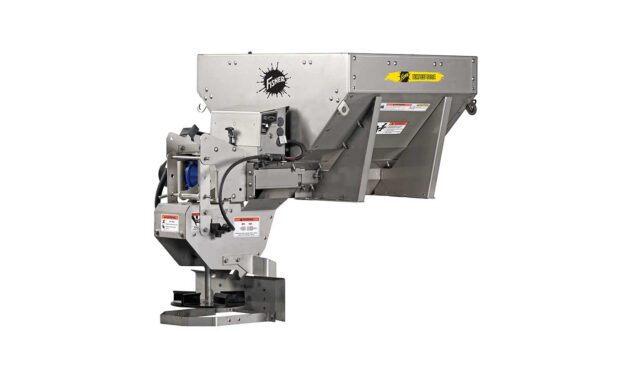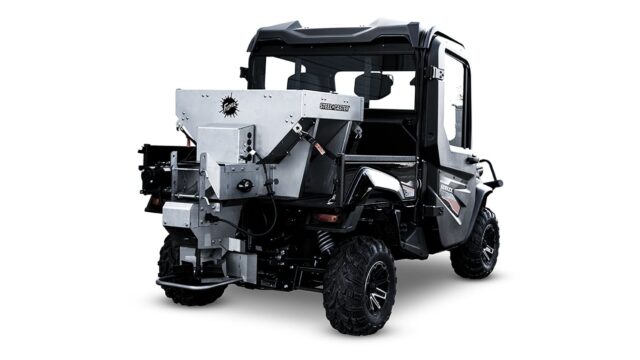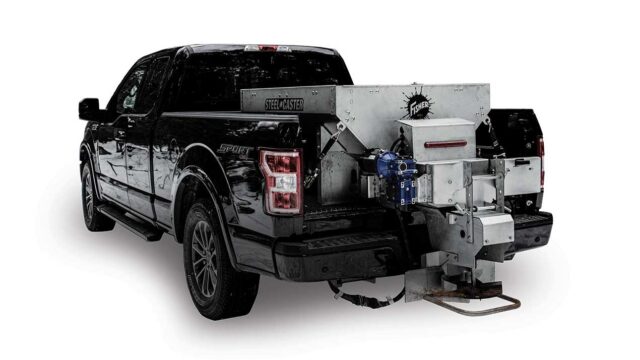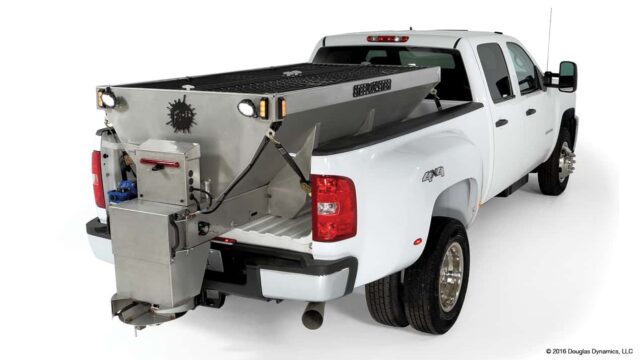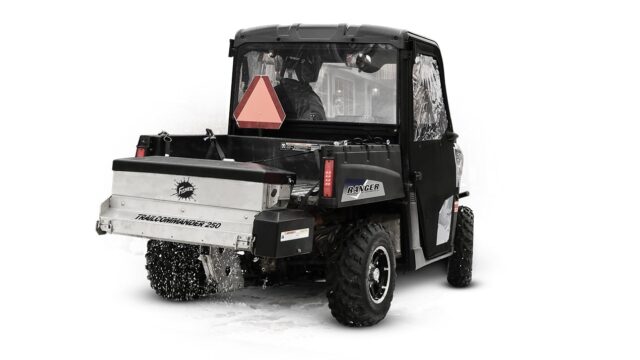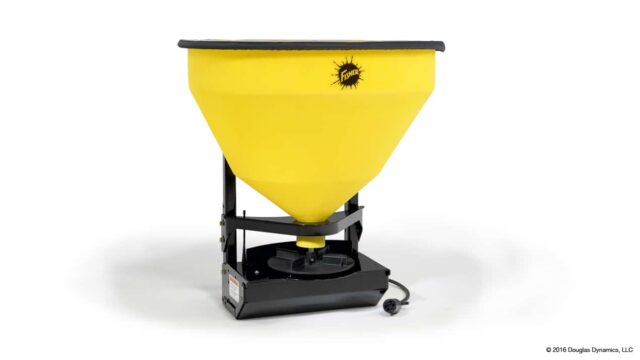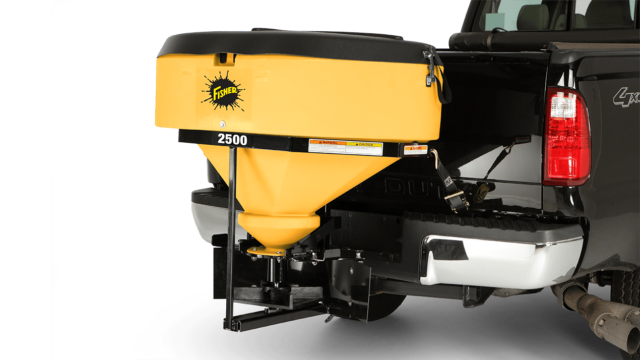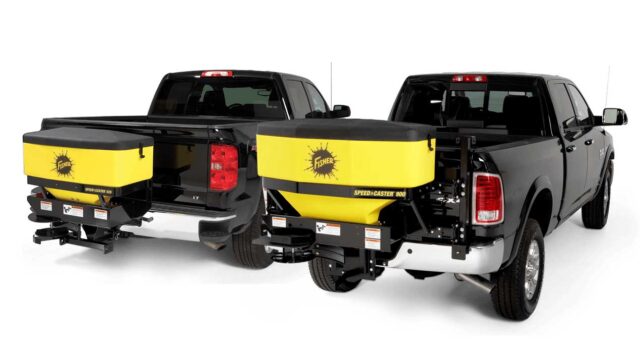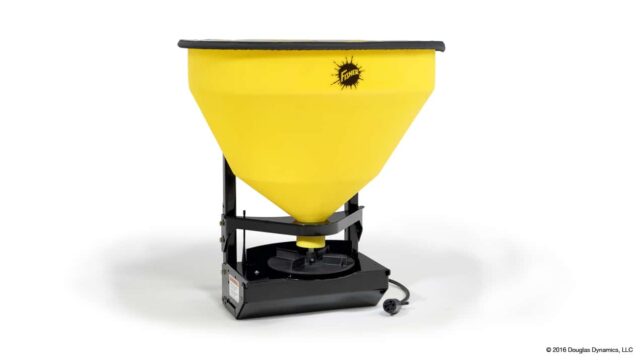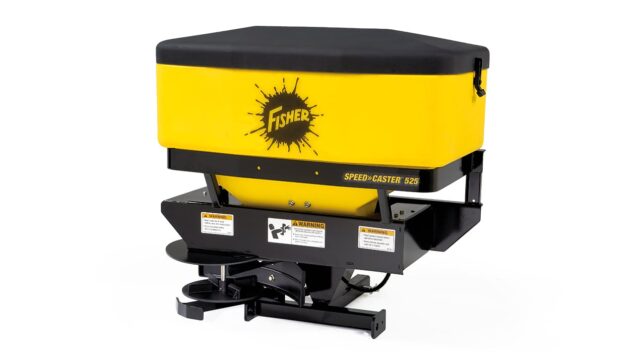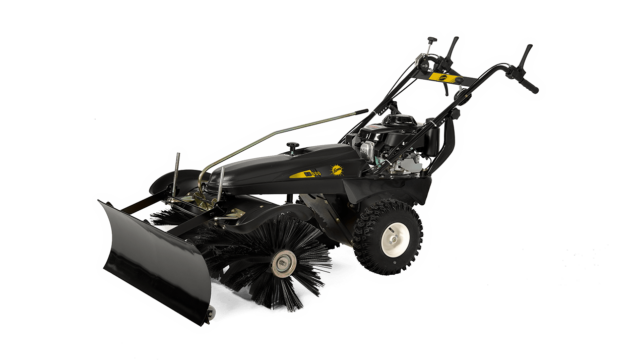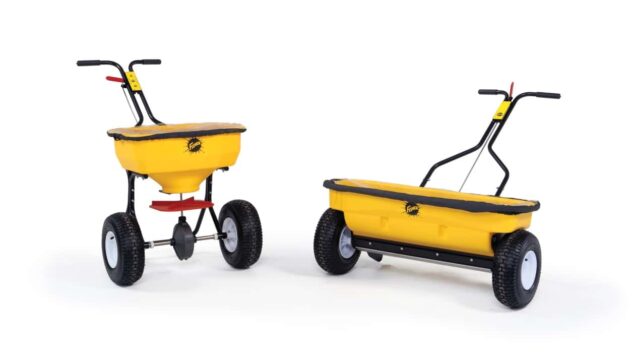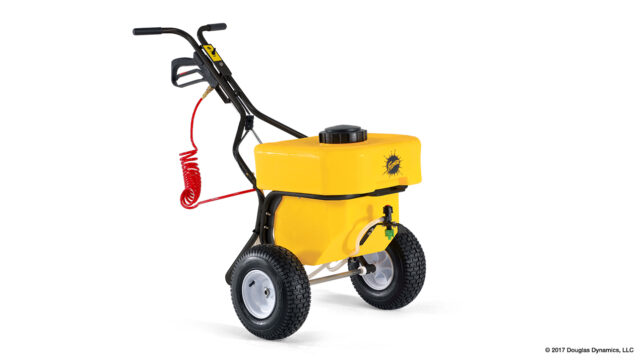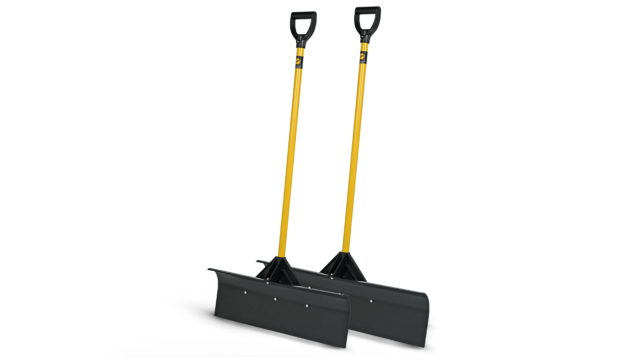Resource Articles Category: Spreader Tips
5 Ways to Boost Your Salting Game This Winter
Created September 30, 2020

Practice makes perfect when it comes to snow and ice control. Once you understand basic ice control techniques and how standard equipment operates, it’s time to start thinking outside the box in order to boost your salting game. Whether it’s knowing the right approach for various storm types or finding the right accessories for your setup, it can make a world of difference in your performance.
Knowing When to Use the Anti-Icing or Deicing Approach
Each storm is different so the approach has to be too. Due to certain weather conditions and the duration of the snowfall, there may be times when you need to alter your salting strategies to be more proactive or reactive. Like almost everything in the snow and ice industry, it’s usually better to be safe than sorry.
1. Anti-Icing with Liquid Brine: This preventative measure allows you to tackle ice before it forms. Liquid brine is often used by municipalities to prevent ice from bonding to roads and highways, but is becoming more popular among residential and commercial properties as well. It takes less resources and manpower to anti-ice than it does melt ice once it forms. Anti-icing measures are ideal for below freezing temperatures and in rainy, cold conditions where black ice is likely to form.
2. Deicing With Pre-Wet Salt: Although salt always works, the time it takes to form brine and start melting ice is critical. If you’re not ready to get into the world of liquids just yet, a great middle of the road approach is deicing with pre-wet Climate has a significant impact on salt effectiveness—if there isn’t enough moisture in the air, it could take up to 48 hours to start working. Once temperatures drop below 15°F, you’ll need a specialty ice melt product or pre-wet system to activate the salt and allow it to work quicker. Straight brine usually works well above 15°F but once it gets colder, you may want to include an additive like calcium chloride.
There are numerous advantages to taking a pre-wet approach:
- The salt sticks to the pavement better with less bounce and scatter of salt crystals, reducing waste and potential damage to grass and foliage near curbs.
- Cut down on the amount of material needed to get the job done, saving money and minimizing the environmental impact.
- Melt ice at lower temperatures and activate the deicing properties of salt sooner, making each application more efficient and effective.
Looking for a product that offers both solutions? The STEEL-CASTER™ 0.7 cu yd Hopper Spreader gives you the best of both worlds with a 50-gallon pre-wet and direct liquid application kit. Gain the ability to pre-wet materials or spray brine directly onto surfaces for anti-icing applications.
The Difference Between a Drop Spreader & a Broadcast Spreader
Each spreader type is built for a specific intent. Broadcast spreaders are very common for truck hoppers and tailgates since the operator can cover more area in less time. This is ideal for large parking lots and driveways when you want a wider spread width. Drop spreaders are intended for narrow sidewalks and walking paths when precision is needed. Instead of scattering salt, it drops it straight down to the pavement with minimal bounce in order to reduce damage to nearby grass and landscaping.
Accessories That Make a Big Impact
Hopper and tailgate spreaders work well on their own, but some circumstances related to weather or material type may require additional accessories to improve performance.
3. Improve Material Flow: When using lower quality bulk salt, salt sand mix or other non-salt materials, the spreader is more prone to bridging (salt) and compaction (sand, gravel, etc.) A poly spreader can usually combat these issues due to its smooth surface but still may benefit from an inverted V or vibrator commonly found in stainless steel hoppers.
- Inverted V: Relieves compaction and downward pressure, keeping sufficient material weight off the conveyor—while allowing material to flow in from the side.
- Vibrator: Designed to move stubborn material, the vibrator shakes the hopper contents to prevent bridging and improve flow.
4. Be Aware of Your Surroundings: Lighting serves two purposes, safety and visibility. Not only does this make you aware of your surroundings but more importantly, makes others aware of you.
- Safety: Strobe lights, beacons and other flashing safety-oriented lights make your vehicle visible to pedestrians and other vehicles when you are operating. Amber is the yellowish color that people associate with caution and are commonly seen at construction sites or high traffic areas where workers are present.
- Visibility: Work lights help to bring visibility to the back of the vehicle so contractors can see the results of the work being performed. This could include illuminating the spread pattern during operation or lighting the back of the truck while unloading extra salt after a storm.
5. Easy Access for Ongoing Maintenance: A central point grease kit is available for the POLY-CASTER™ and larger STEEL-CASTER™ hopper spreaders in 0.7 and 1.5 – 6.0 cu yd capacities. It creates less hassle for regular maintenance that is essential to bearing life and will keep the equipment running smooth throughout the season.
When you’re ready to take your salting game to the next level, FISHER® has your back. Accessorizing your equipment and taking the right approach can improve your performance in numerous ways. Pair that with proper maintenance and preparation, and you’ll be ready for whatever winter throws at you.
The Profitable Reason You Should Start to Pre-Wet Salt for Winter Applications
Created April 15, 2020
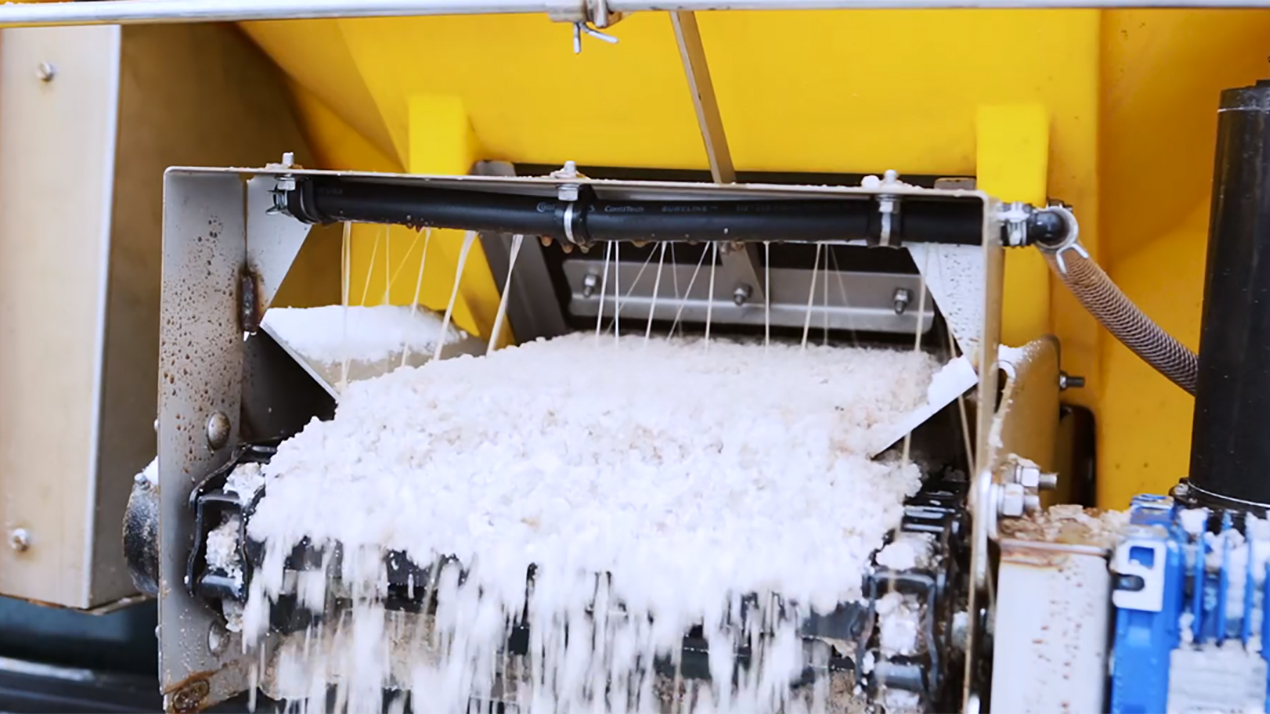
Every winter storm, account and operation is different so there’s no one size fits all solution when it comes to de-icing. The pavement temperature, type of precipitation, rate of accumulation and application rate all play a role in getting it right. Although, it has been scientifically proven that pre-wetting material while salting has numerous benefits.
Pre-Wet Systems Active Salt for Greater Performance
Once the pavement temperature hits 15°F, salt becomes ineffective and relies on a bit more chemistry to be useful. Contractors have started to spray solid de-icers with a liquid salt brine solution as it is dispersed to the pavement, a term commonly referred to as pre-wetting. It sounds counterintuitive but the results show otherwise. 80% of the melting action in the first 10 minutes after salting is supplied by the brine used to pre-wet, leaving a noticeable impact on the pavement.
Using this de-icing strategy accelerates the brining of the salt, enabling it to work faster at colder temperatures. Since salt is an ionic compound, when it’s mixed with water it actually lowers the freezing point (typically 32°F), making it harder for water molecules to bond together in their rigid structure.
Improved Productivity Reduces Material Costs
Pre-wetting provides both immediate and sustained results, while using 1/3 less salt than usual. Since pre-wet granules bounce less, you can be more precise in your spreading area. Studies show that pre-wetting can also reduce material costs by up to 40%, depending on current baseline application rates.
Save the Environment, One Piece of Salt at a Time
More than 20 million tons of salt are used in the United States every year to de-ice pavement. Once that salt dissolves, it starts to leach into our waterways causing harmful environmental, health and economic impacts. Pre-wetting reduces the amount of salt needed to get the job done, eliminating waste and reducing damage to the environment. Be mindful of over-salting and consider adopting pre-wet or liquid anti-icing techniques.
Interested in learning more about the effects of pre-wet? The POLY-CASTER and STEEL-CASTER spreaders have a Pre-Wet System kit—and if you’re really ready to jumpstart your liquids journey, check out the SS-120 Walk-Behind sidewalk sprayer.
How to Safely Mount a Spreader to a Snow & Ice Control Vehicle
Created November 25, 2019
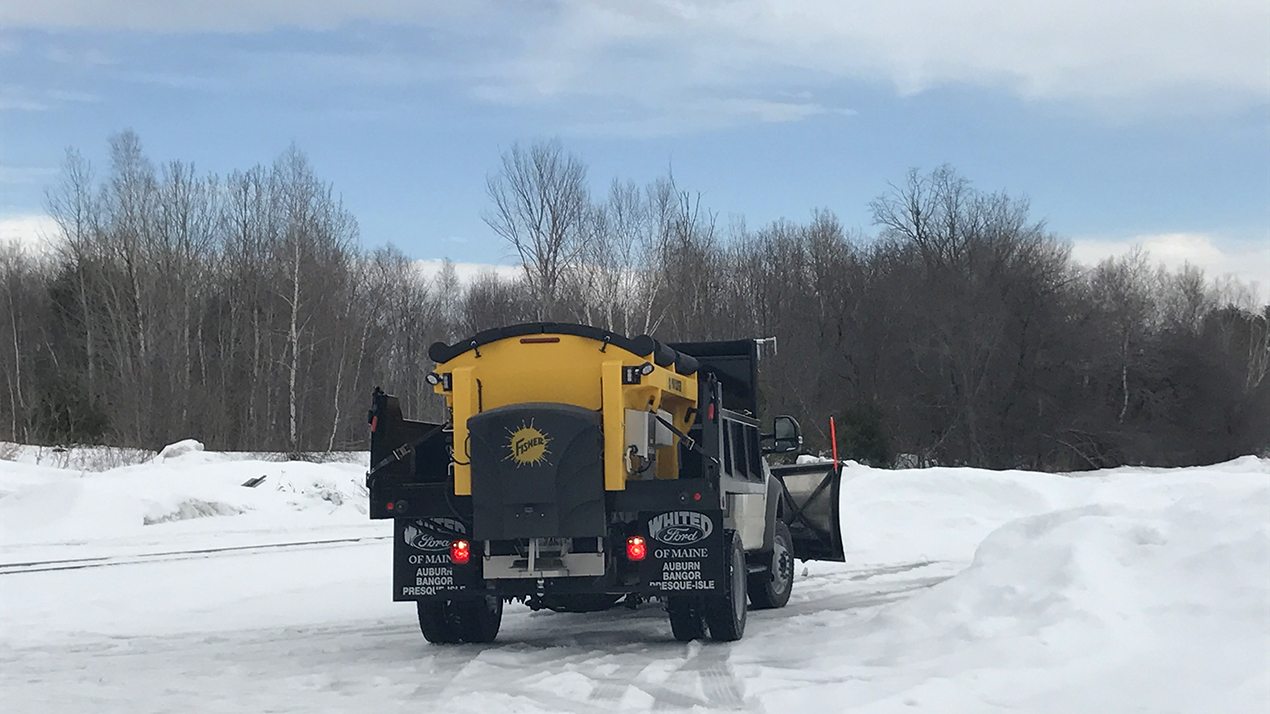
Winter snowfall is our ally as snow and ice professionals, but Mother Nature’s fury can test the limits of your team and their machines. Having your spreader equipment ready before the storm hits by following these simple steps can have your fleet ready to withstand whatever winter can throw at it.
Spreader Mounting
BLOCKING: The spreader must have blocking between the front of the sill and the bed of the truck to maintain support and proper spreader position in the vehicle.
BOLTS: The spreader must be bolted to the vehicle frame. Do not rely on tie-down chains or straps alone to hold the spreader in the vehicle.
STRAPS: Periodically check all spreader to frame fasteners and hold down straps for tightness and adjust as necessary.
Safety First
- Observe all safety stickers and notices that appear on the unit or are listed in the owner’s manual.
- When checking spreader for normal operations keep hands free from all moving parts.
- When greasing or servicing the unit make sure that the vehicle is turned off and all spreader controls are in the off position.
Pre-Trip Spreader Inspection
Prior to every storm event, make sure to complete a comprehensive pre-trip inspection on the spreader assembly to ensure safe and proper operations:
- Verify that wire harnesses and battery cable are properly secured away from hot or moving parts
- Check vehicle battery and charging systems for proper operation
- Check vehicle lights for functionality
- Check that all electrical connections are clean and free of corrosion
- Verify correct conveyor tension and alignment
- Ensure that conveyor system and spinner assembly work freely and properly
- Verify that dielectric grease is applied to all electrical connections
- Lubricate all grease fittings with good quality multipurpose grease
- Check that strobe and work lights are functioning properly
Originally written by SIMA and FISHER® Engineering.
